Location, location, location...
Posted by Richard Newstead on 26th May 2017
Introduction
A recent article in a ham radio magazine described the design of an antenna. The author modelled his antenna using a popular free software antenna modelling package. He then went on to describe its construction. His subsequent testing was the usual fare of a few specimen DX contacts on various bands. No other testing was presented. I wrote to the author suggesting that DX contacts told readers very little about how the antenna was working. The problem is that there are so many factors that affect performance in most real back-yard locations that simple modelling (although a very useful starting point) does not reveal the full picture; and DX contacts generally add no useful information.
Setting aside the state of the ionosphere at the time the contacts were made, what surrounds the antenna makes a big difference to its performance. ...or does it? Guessing is not sufficient; let's carry out an experiment.
How was it done?
Two identical small transmitting loop antennas were set up in different locations. Location 1 was a typical suburban garden. Location 2 was a large flat open field (8 km North of location 1). The loops were approximately 1 metre in diameter and the base of the loops was 1.8 metres above the ground. The loops were orientated in the same direction (nulls N-S).
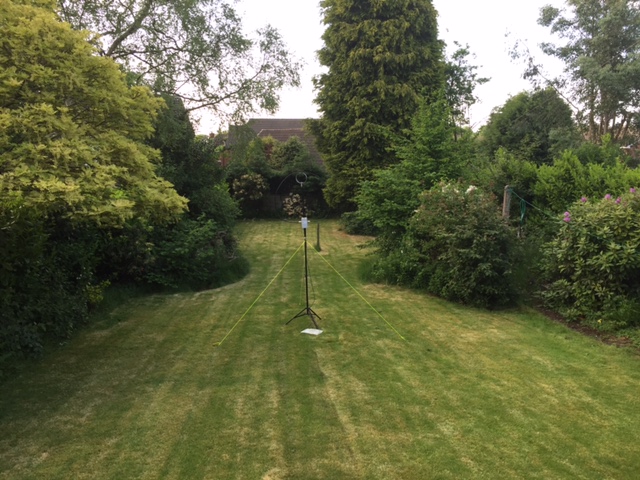
Location 1 (ident G31CWI)
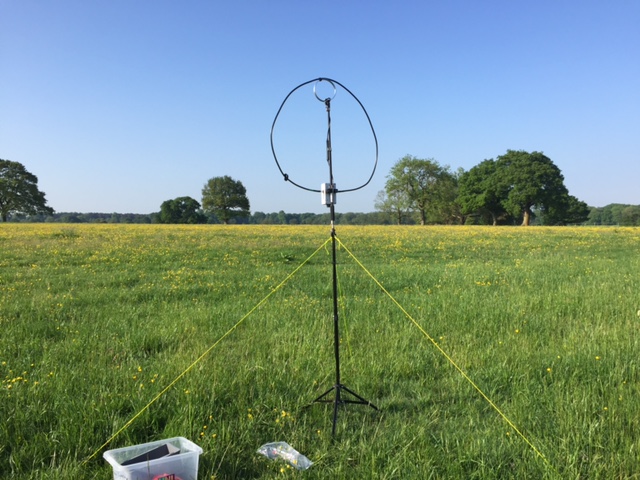
Location 2 (ident G32CWI)
Each loop was connected to a WSPRlite transmitter on the 30m band (10 MHz). Both transmitters were set to radiate 200 mW (+/- 0.5 dB). The WSPRlite at the open field site had an additional 6dB attenuator in its output. This was done to reduce the possible signal differences at the receiving stations. The WSPlite in location 1 (garden) was programmed with the ident G31CWI while the WSPRlite at location 2 (field) was G32CWI.
The test system was left running for about 24 hours. For the detailed analysis only simultaneous readings were used to mitigate large scale ionospheric changes. As it is unlikely that the short-term fading between two stations 8km apart would be correlated, a large data set would be required.
Results
Note that the open field test site system G32CWI had a 6dB attenuator in line so its actual transmit power was 50mW. WSPRlite 1 = 22.82 dBm, WSPRlite 2 = 23.02 dBm. The results below have not been corrected for these differences.
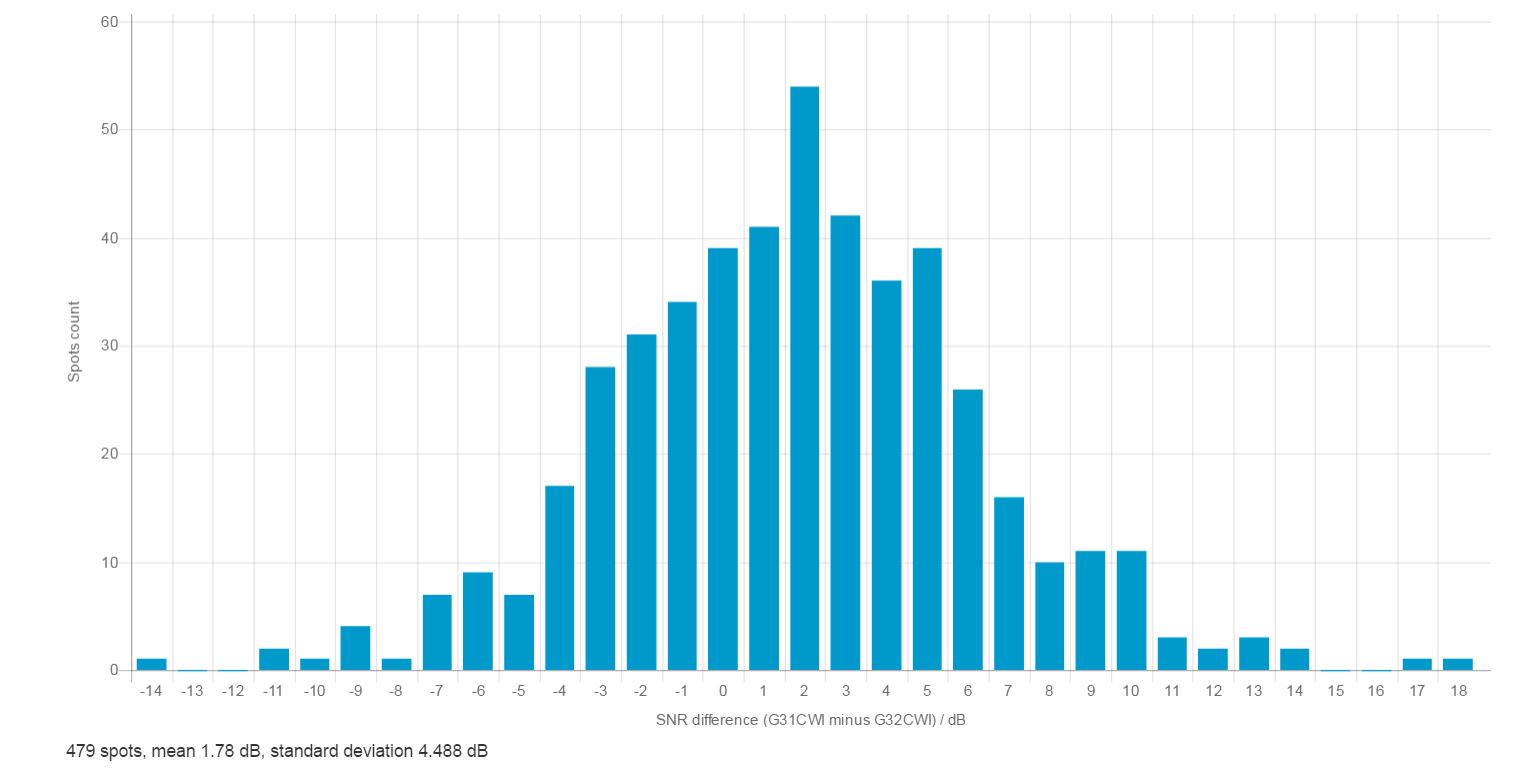
Median = 2dB
A linear regression was done but as r^2 was only 0.53 it was not considered reliable.
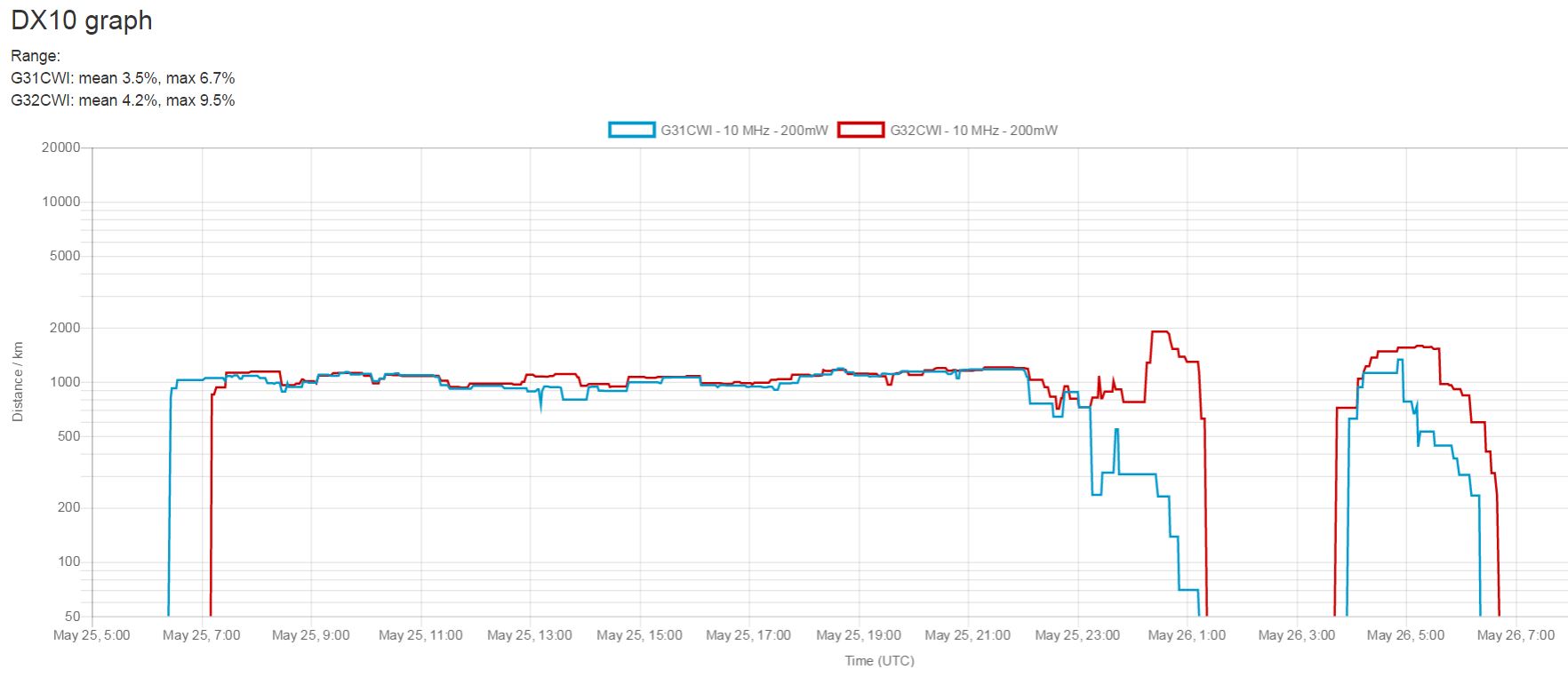
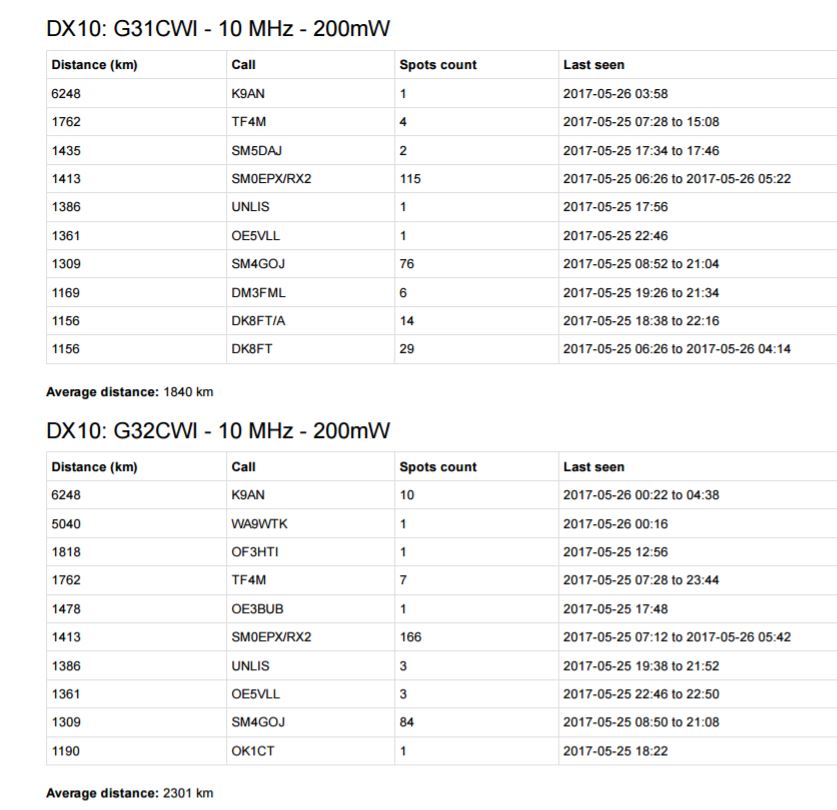
Number of spots in test period:
G31CWI = 832
G32CWI = 1368
Test data to download:
Discussion
The median difference between the sites was 4dB in favour of the open field test site (corrected for the 6dB attenuator).
However, the other metrics hint at a much larger difference. Notwithstanding the 6 dB power difference, the open field site easily outperformed the suburban site using the DX10 metric for the period (2301 km vs 1840 km). The same difference shows in the overall number of spots (1368 vs 832).
Conclusion
There is no doubt that the system at open field site outperformed that at the suburban site. However, finding an appropriate way to quantify that difference is more difficult.


